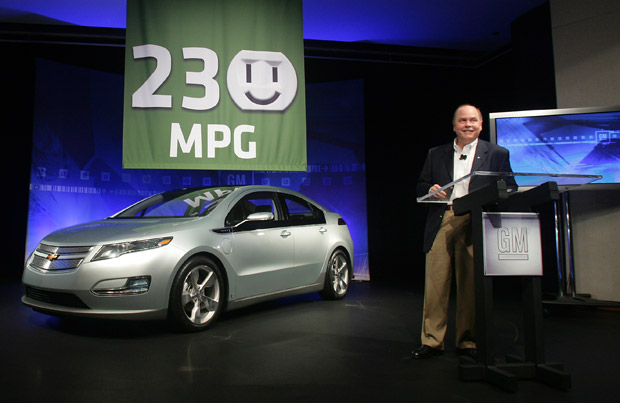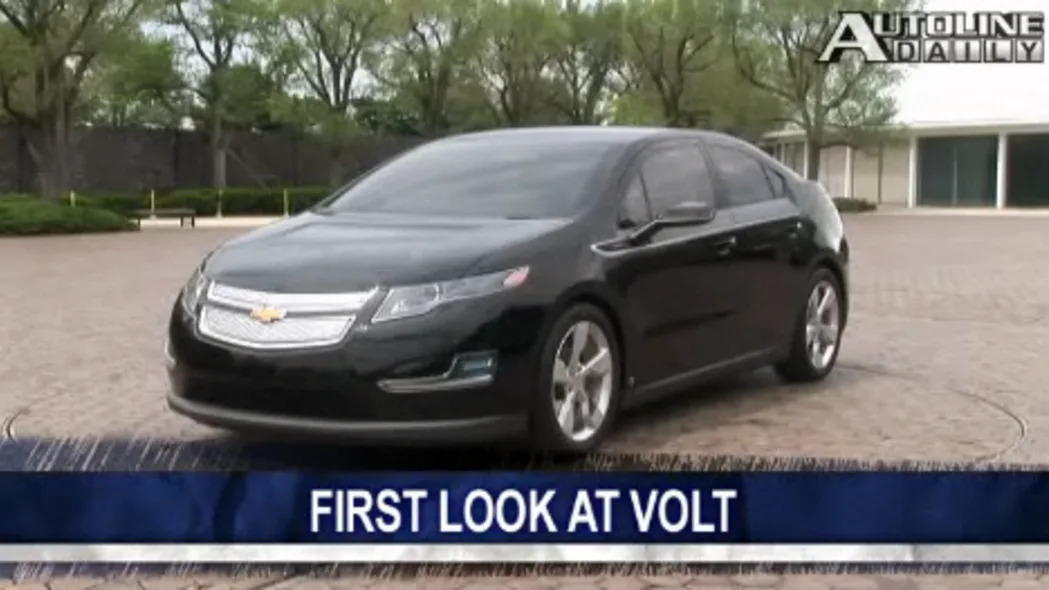It was probably mid-1980, soon after the federal government agreed to guarantee massive loans to financially struggling Chrysler Corp., when then-Chrysler Chairman Lee Iacocca invited groups of auto media and analysts to its styling center for an off-the-record preview of what was coming two, three, even four years down the road. Most were impressed.
We couldn't write about what we saw that day, but we could report in general terms that, much to our surprise, it looked pretty damn good. That was a very crafty move that probably altered outside perceptions – mostly by word of mouth – enough to help the company survive to launch those appealing new products and pay off those loans seven years early.
A couple years later, Ford was on the ropes thanks to woefully bad product quality and styling. Then-new Ford Chairman Don Petersen sat down next to me at a table full of auto writers wolfing down box lunches during the company's summer Dearborn Proving Ground "long-lead" press preview. Between bites of his sandwich, he opened his brief case, pulled out a handful of photos and surreptitiously showed them to me. They were styling models of the next-generation Thunderbird (which looked terrific) and Mercury Cougar (less so, but distinctive) and a pair of smooth, nicely proportioned compacts that would launch two years later as the Ford Tempo and Mercury Topaz.
The following summer, Ford Design PR leaders pulled some of us aside, one by one, took us into a design studio and showed us models of what would become the first-generation Taurus and Sable sedans and wagons that would save the company's bacon more than two years later. Again, we were on our honor not to report what we had seen. Again, the object was to subtly improve outside perceptions and expectations.
Fast-forward to Aug. 11, 2009, one month and a day after the "new General Motors" emerged from Chap. 11 bankruptcy. As you've heard, GM invited a substantial number of auto media and analysts to its Warren, Mich. Tech Center to open its kimono and show off pretty much everything it has coming in the next few years. Find out what was revealed after the jump.
We couldn't write about what we saw that day, but we could report in general terms that, much to our surprise, it looked pretty damn good. That was a very crafty move that probably altered outside perceptions – mostly by word of mouth – enough to help the company survive to launch those appealing new products and pay off those loans seven years early.
A couple years later, Ford was on the ropes thanks to woefully bad product quality and styling. Then-new Ford Chairman Don Petersen sat down next to me at a table full of auto writers wolfing down box lunches during the company's summer Dearborn Proving Ground "long-lead" press preview. Between bites of his sandwich, he opened his brief case, pulled out a handful of photos and surreptitiously showed them to me. They were styling models of the next-generation Thunderbird (which looked terrific) and Mercury Cougar (less so, but distinctive) and a pair of smooth, nicely proportioned compacts that would launch two years later as the Ford Tempo and Mercury Topaz.
The following summer, Ford Design PR leaders pulled some of us aside, one by one, took us into a design studio and showed us models of what would become the first-generation Taurus and Sable sedans and wagons that would save the company's bacon more than two years later. Again, we were on our honor not to report what we had seen. Again, the object was to subtly improve outside perceptions and expectations.
Fast-forward to Aug. 11, 2009, one month and a day after the "new General Motors" emerged from Chap. 11 bankruptcy. As you've heard, GM invited a substantial number of auto media and analysts to its Warren, Mich. Tech Center to open its kimono and show off pretty much everything it has coming in the next few years. Find out what was revealed after the jump.
New President and CEO Fritz Henderson began with a one-hour live webcast and Q&A. "Our goal is to make the customer the center of our universe," he asserted, adding that GM would use its "Fastlane" blog for customer research. And he said to expect no fewer than 25 new GM cars and crossovers in the next 24 months.

Early in his webcast pitch, he announced the number that would dominate auto news for the next several days: the Chevy Volt range-extender EV's projected EPA city rating of "at least" 230 miles per gallon! That astounding estimate is based on early drafts of an EPA rating process that will try to comprehend that most drivers will use zero fuel for the first 40 miles of battery electric driving and very little once the engine cranks up to keep it going. (The EPA city test covers 51 urban miles; only in the last 11 will the Volt consume any fuel.) And even the "combined" city/highway rating, Henderson added, should come in at better than 100 mpg.
Not surprisingly, that set off an orgy of comment and counter-comment. Folks both with and without technical knowledge and experience rushed to question, ridicule and debunk the claim, while some jumped in to defend it. As ABG Editor Sebastian Blanco reported that day, Volt Vehicle Line Executive Frank Weber said the 230 mpg number is reasonable because EPA's (proposed) method tries to accommodate owners who will rarely or never plug it in as well as those who will recharge its batteries off the grid every chance they get.
[230 mpg] will be little more than "mine is bigger than yours" boasting points virtually meaningless to real customer experience.
My take, some 15 months before the first production Volt hits the street: so what? On the one hand, GM almost certainly would not have publicized that number without pretty strong confidence in being able to back it up. On the other, whatever the final window sticker numbers, they will be little more than "mine is bigger than yours" boasting points virtually meaningless to real customer experience. Probably more than any other vehicle in the history of EPA emissions and fuel economy testing, the Volt's "Your actual mileage will vary" disclaimer will mean HUGE variation depending on how far and how it is driven, and charged.
Far more important as GM labors to recover and become profitable again (as soon as the still-sagging economy permits) is everything else we saw and heard that day. They taped over our camera-phone lenses, then showed us: studios full of new and future fuel-efficient Buick (yes, Buick) and GMC cars and CUVs, including 2011 mid-size Regal and 2012 compact (Chevy Cruze-size) Buick sedans and a distinctive compact crossover for each; an impressive array of 2010, 2011, 2012, and beyond Chevrolet cars and CUVs; a display of rich, innovative and user-friendly Cadillac interior designs and a pair of stunning future Cadillac cars: a sleek, smaller-than-CTS rear-drive coupe (there will also be a sedan) and a regally handsome Mercedes S-Class-size front-drive sedan to replace the long-running fwd DTS and rwd STS.
Smallest of the Chevies was the aggressively sporty Spark, which won a consumer competition over two other concepts and will arrive stateside in early 2012. Next up was the next-gen (Korean-built) Aveo, looking different and potentially polarizing but pretty cool to me. Then the much more conventional compact Cruze, slated to replace the Cobalt in the third quarter of 2010, which has a wonderful interior and -- like every new and future Chevy we saw – looks larger, more substantial and more expensive than it will be. And the next-gen Malibu, probably a 2013 model, a handsome, cleanly sculpted piece with a surprisingly rich interior.
Another pleasant surprise was the 2011 Orlando, a Cruze-based crossover substantially smaller than the new 2010 Equinox, which offers three roomy rows of seating. Also on display was a resplendent-in-black Volt and a pair of Volt interior bucks – one with white, the other black, passive touch-button control surfaces. We also toured the pre-production build shop that began assembling test and development Volts in mid-June at a rate of 10 a week and will complete its run of 80 by mid-September, and drove a variety of new and near-future GM products at the Milford Proving Grounds that afternoon. It was a very full and educational day.
"I now have no doubt about the future of this company," said a magazine-editor friend at its end. And, at the risk of annoying all those GM-haters out there, I couldn't agree more.
Award-winning automotive writer Gary Witzenburg has been writing about automobiles, auto people and the auto industry for 21 years. A former auto engineer, race driver and advanced technology vehicle development manager, his work has appeared in a wide variety of national magazines including The Robb Report, Playboy, Popular Mechanics, Car and Driver, Road & Track, Motor Trend, Autoweek and Automobile Quarterly and has authored eight automotive books. He is currently contributing regularly to Kelley Blue Book (www.kbb.com), AutoMedia.com, Ward's Auto World and Motor Trend's Truck Trend and is a North American Car and Truck of the Year juror.



Sign in to post
Please sign in to leave a comment.
Continue